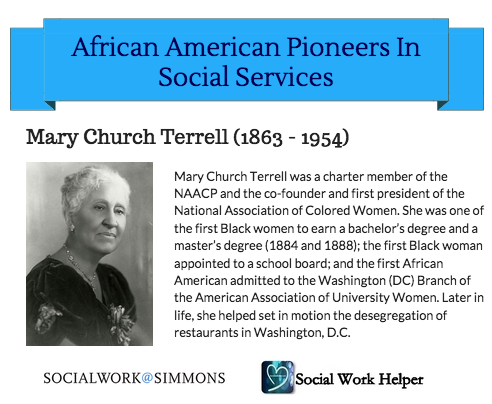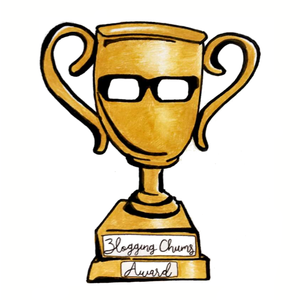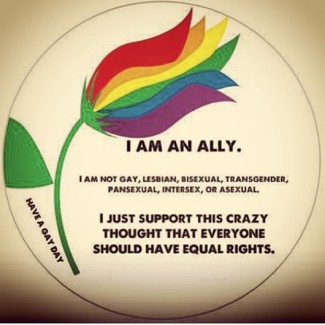September – This Month In Black American History
By Guest Blogger Yahtzeebutterfly
Birthdays
September 2, 1766 – Businessman and abolitionist James Forten was born in Philadelphia, Pennsylvania. Author Julie Winch discusses her book on the life of James Forten at this link.
September 3, 1895 – Lawyer Charles Hamilton Houston in Washington, D.C.
September 4, 1908 – Writer Richard Wright in Natchez, Mississippi
September 5, 1939 – Claudette Colvin, the first person arrested for not giving up her bus seat to a White woman in Montgomery, Alabama.
Interview by Democracy Now with Claudette Colvin:
September 12, 1913 – Track and field Olympic champion Jesse Owens in Oakville, Alabama
September 12, 1992 – Dr. Mae Jamison became the first African American woman to travel in space.
September 15, 1852 – Edward Alexander Bouchet was an African American physicist and educator and was the first African-American to earn a Ph.D. from any American university, completing his dissertation in physics at Yale in 1876. Bouchet was among the first 20 Americans (of any race) to receive a Ph.D.
September 16, 1925 – Riley B. King was born and is professionally known as B.B. King. He is considered the most influential blues musicians of all time, earning the nickname “The King of the Blues.”
September 19, 1941 – Singer Otis Redding
September 22, 1862 – Announcement of the Emancipation Proclamation by President Abraham Lincoln
September 23, 1926 – Saxophonist John Coltrane in Hamlet, North Carolina.
September 23, 1863 – Birth of civil rights and suffrage activist Mary Church Terrell in Memphis, Tennessee

September 27, 1827 – First Black U.S. senator Hiram Rhodes Revels was born in Fayetteville, North Carolina. He was elected to the U.S. Senate in 1870 to represent the state of Mississippi. The lecture at this link is a tribute to Senator Hiram Rhodes Revels.
Events
September 3, 1838 – Abolitionist, writer, orator, and statesman Frederick Douglas escaped from a plantation in Tuckahoe, Maryland where he had been born a slave.
September 9, 1915 – Founding of The Association for the Study of Negro Life and History by the “Father of Black history” Dr. Carter G. Woodson who published the first issue of the Association’s “Journal of Negro History” in 1915. In 1926 Carter Woodson launched Negro History Week which later expanded into Black History Month.
September 17, 1787 – “U.S. Constitution is approved with three clauses protecting slavery.” The Box Houston has the story.
September 19, 1881 – Booker T. Washington taught the first classes at Tuskegee Institute.
September 24, 2016 – National Museum of African American History and Culture will open in Washington, D.C. !
September 29, 1910 – The founding of the Urban League. PBS has the story.
September 30, 1962 – James Meredith, with an escort of U.S. Marshals, enrolled at the University of Mississippi. Angered over Meredith’s enrollment, a mob of 3000 Whites rioted and fought state and federal units.
Throughout the month, Yahtzeebutterfly posts other historical moments in the comment section. Please feel free to add to this month’s history by posting to the comment section.
Posted on 09/05/2016, in Black History Month and tagged Black history, historical births and events, September. Bookmark the permalink. 80 Comments.







































For the kids in your family, you may wish to check the children’s section of your local library for this book on Claudette Colvin who was arrested for not giving up her bus seat to a White woman:
(She was born on this day in 1939.)
LikeLiked by 2 people
LikeLiked by 1 person
“I would rather die on my feet than on my knees” Charles Hamilton Houston. Thanks for this Yahtzeebutterfly
LikeLiked by 2 people
Yvw, Mindy.
I’m glad you had a chance to watch that video on Charles Hamilton Houston. As Thurgood Marshall said, referring Brown v. The Board of Education decision, “We owe it all to Charlie.”
LikeLiked by 2 people
A bit more on James Meredith
LikeLiked by 2 people
Thanks so much for adding this video, Mindy. 🙂
LikeLiked by 2 people
Rather than simply posting in my article above about the September 15, 1963 evil church bombing in Birmingham that ripped the lives of four precious girls from their loved ones and from all of us, I felt I should have a separate comment here to give us a better moment of pause and reflection.
The following song The Ballad of Birmingham impacts my heart deeply as I still grieve over the horrific bombing murders of Addie Mae Collins, Cynthia Wesley, Carole Robertson and Carol Denise McNair.
LikeLiked by 2 people
These were very informative!
LikeLiked by 1 person
Dear Yahtzeebutterfly. You did an amazing job. This is packed with a lot of information that I did not know. Thanks, Gronda
LikeLiked by 3 people
Gronda,
Thank you for your kind words. We are Sooo fortunate that so many people have created Youtube history accounts that further our knowledge.
I am always learning, too. What is exciting is that historians in the last 20 years have been authoring books on the local people and events of the civil rights movement. (I just finished reading one on the St. Augustine, Florida and the summer of 1964 there.)
LikeLiked by 3 people
These are all great, I really enjoyed the stories of Carter G Woodson and Claudette Colvin. Am still following links to learn more.
LikeLiked by 2 people
Mindy, your words are encouraging and inspire me “to keep at it.” I appreciate what you posted about James Meredith’s march.
LikeLiked by 2 people
With students being back to school in September, this is a month to reflect back on efforts to integrate schools across the country.
We often thinks of the South as the only place of resistance to school integration, but even Boston, Massachusetts had strife.
This video gives some Boston school history:
LikeLiked by 3 people
It is extremely disappointing to know that folks in the North behaved this way. I never knew Boston experienced this ugliness too. 😦
LikeLiked by 2 people
September 6, 1957 – Nashville public schools ordered by federal judge to integrate immediately.
Excellent background article:
“Walking into History: The Beginning of Desegregation in Nashville”
https://southernspaces.org/2009/walking-history-beginning-school-desegregation-nashville
Excerpt (introduction to article):
Beverly Watts briefly discusses the desegregation of Tennessee schools in this one minute video:
LikeLiked by 2 people
Bombing a school because a 6 y/o child of color was allowed to attend, how very ‘Christian’ of them. smh.
LikeLiked by 2 people
Having just posted a comment about Nashville, TN desegregation, I would like to now post two outstanding videos on school desegregation and the resistance to it in Clinton, Tennessee:
LikeLiked by 2 people
Phenomenal, the story of the Clinton 12, the 2nd Video. I’ll listen to the 1st one through the day. Until a white man was beaten, nothing changed. Like the story of Viola Luizzo, the only white woman killed in the civil rights movement. It took the death of a white woman to finally designate the KKK as a terrorist organization and for the government to begin to prosecute their crimes. 😦
LikeLiked by 2 people
https://twitter.com/BlackDadImages/status/773287790041829377
LikeLiked by 2 people
LikeLiked by 1 person
LikeLiked by 1 person
Artist Jacob Lawrence, born on September 7, 1917, painted his Migration Series at the age of 23. In the manner of a storyteller, he depicted the Great Migration of African Americans from the South to the North.
LikeLike
September 7, 1930 Happy Birthday Sonny Rollins! 🎈🎂🎈
In 1997:
2012:
LikeLike
September 7, 1914 Librarian and curator of the Schomburg Center for Research in Black Culture, Jean Blackwell Hutson was born in Sommerfield, Florida.
From Wikipedia:
LikeLike
September 7, 1949 Happy Birthday Gloria Gaynor! 🎈🎂🎈
LikeLike
https://twitter.com/BlackDadImages/status/773689651953623040
LikeLike
On September 8, 1925 physician Ossian Sweet moved his family into his newly purchased house in a Detroit White neighborhood. The next night, he and his friends defended his house against a White mob which formed outside his house.
This short video tells the story of what ensued:
LikeLike
First baseman Buck Leonard was born on September 8, 1907 in Rocky Mount, North Carolina.
From Wikipedia:
http://baseballhall.org/sites/default/files/Leonard%20Buck%20Plaque_NBL.png
LikeLike
Tennis champion Althea Gibson won the U.S. Open on September 8, 1957.
https://youtu.be/K5TkI34rLus&rel=0
LikeLike
LikeLike
LikeLike
September 8, 1954 Happy Birthday Ruby Bridges! 🎈🎂🎈
LikeLike
Yahtzee,
Words cannot express my appreciation for your commitment in during the monthly Black History. Your dedication to researching history, and taking the time to do an excellent job, are special skills, and I am grateful that you use them here on We Hold These Truths To Be Self-Evident.
LikeLike
Thank you for your kind words. I am always learning. I really do believe that we can better understand the present and its issues by studying the past.
LikeLike
Yahtzee,
I agree.
LikeLike
September 9, 1968– Arthur Ashe won the U.S. Open Tennis Championship
LikeLike
September 9, 1941 Singer and songwriter Otis Redding was born in Dawson, Georgia.
LikeLike
Poet Sonia Sanchez was born in Birmingham, Alabama on September 9, 1934.
From Wikipedia:
LikeLike
Ballet dancer Misty Copeland was born on September 10, 1982.
LikeLike
September 10, 1880 – Birth of poet and activist Georgia Douglas Johnson.
Ms. Johnson’s desire for women’s liberation:
LikeLike
September 11, 1942 Happy Birthday, singer and dancer Lola Falana! 🎈🎂🎈
You have inspired so many by your trust in the Lord and His healing power as you have had to deal with episodes of multiple sclerosis. Although you no longer perform on stage, you are giving much to the world through your church speeches. (And, this morning, I enjoyed seeing videos of your past singing performances and shows.)
“Muhammad Ali on Lola Falana Show” :
LikeLike
https://twitter.com/SkinyVegetarian/status/775216700174114816
LikeLike
Wow thanks for this wonderful history
LikeLiked by 1 person
LikeLike
September 13, 1885 Birth of educator, writer, and philosopher Alain Locke in Philadelphia, Pennsylvania. A graduate in English and philosophy from Harvard University in 1907, he was an inspirational leader of the Harlem Renaissance.
“Ossie Davis: Dr. Alain Leroy Locke’s Influence” :
LikeLike
September 13, 1931 Birth of playwright Adrienne Kennedy in Pittsburgh, Pennsylvania.
Adrienne Kennedy interview:
LikeLike
On September 13, 1881 Inventor Lewis Latimer patented a carbon filament for the electric light.
LikeLike
September 14, 1921Birth of state senator, judge, and civil rights activist Constance Baker Motley.
LikeLike
LikeLike
September 14, 1950 Birth of John Steptoe, author and illustrator of children’s books
LikeLike
On September 15, 1963 the horrific bombing of the Sixteenth Street Baptist Church in Birmingham, Alabama killed Addie Mae Collins, Cynthia Wesley, Carole Robertson and Carol Denise McNair. It was an evil act of terrorism that took their precious, treasured lives. The memory of the news I heard that day still shakes my heart and makes me tremble for them and their loved ones.
The following video of the “Ballad of Birmingham” brings me to tears.
LikeLike
LikeLike
LikeLike
September 16, 1925 Birth of blues singer and guitarist B.B. King.
LikeLike
September 16, 1953 Birth of acoustic jazz guitarist and composer Earl Klugh.
LikeLike
https://twitter.com/BlackJulieKnows/status/776826906800955396
“Michael Hill on James Alan McPherson”
LikeLike
On September 17, 1984 Vanessa Williams became the first African American to be crowned Miss America.
LikeLike
September 17, 1889 Claude Barnett, the founder of the Associated Negro Press, was born in Sanford, Florida.
Excerpt from http://www.aaregistry.org/historic_events/view/associated-negro-press-founded :
LikeLike
https://twitter.com/BlackJulieKnows/status/777145268051517440
Here is some additional information on Hampton University:
LikeLike
https://twitter.com/BlackDadImages/status/777266808961236992
LikeLike
LikeLike
LikeLike
September 18, 1895 – Booker T. Washington delivered his “Atlanta Compromise” speech at the Cotton States Exposition in Atlanta.
LikeLike
On September 18, 1919Fritz Pollard became the first African American to play for a major professional football team.
Excerpt from article at http://thestartingfive.net/2012/01/19/ron-glover-talks-football-with-fritz-pollard-iii-part-i/
LikeLike
https://twitter.com/BlackDadImages/status/777562405727526913
*****
Here is a short video on Jack L. Cooper :
LikeLike
September 19, 1887 Blues singer and bandleader Lovie Austin was born in Chattanooga, Tennessee.
LikeLike
https://twitter.com/BlackDadImages/status/777863795859394560
LikeLike
September 20, 1885 – Birth of ragtime and jazz pianist Ferdinand “Jelly Roll” Morton in New Orleans, Louisiana. (From Wikipedia: “Morton was born into a creole of color family in the Faubourg Marigny neighborhood of downtown New Orleans, Louisiana. Sources differ as to his birth date: a baptismal certificate issued in 1894 lists his date of birth as October 20, 1890; Morton and his half-sisters claimed he was born on September 20, 1885.)
LikeLike
On September 21,1872 John H. Conyers became the first Black American to be accepted at Annapolis Naval Academy.
Excerpt from article at http://military.wikia.com/wiki/John_H._Conyers
LikeLike
https://twitter.com/BlackDadImages/status/779139680994521088
LikeLike
September 23, 1863
https://twitter.com/BlackJulieKnows/status/779313708904411136
LikeLike
You can watch the opening ceremonies of the National Museum of African American History and Culture at this link now:
https://www.c-span.org/video/?415271-5/washington-journal-viewer-calls&live
LikeLike
LikeLike
LikeLike
Excerpts from Rep. John Lewis’ speech at the dedication of the Museum of African American History and Culture:
LikeLike
LikeLike
LikeLike
President Obama talked about the slave block exhibited in the National Museum of African American History and culture:
Here is a photo of that slave block:

LikeLike
Highlights of Obama’s speech at the ceremony dedicating the National Museum of African American History and Culture:
– – – – –
– – – – –
– – – – –
LikeLike
September 30, 1919 to October 1, 1919 – Elaine Race Riot (Also called the Elaine Massacre) in rural Phillips County, Arkansas.
LikeLike